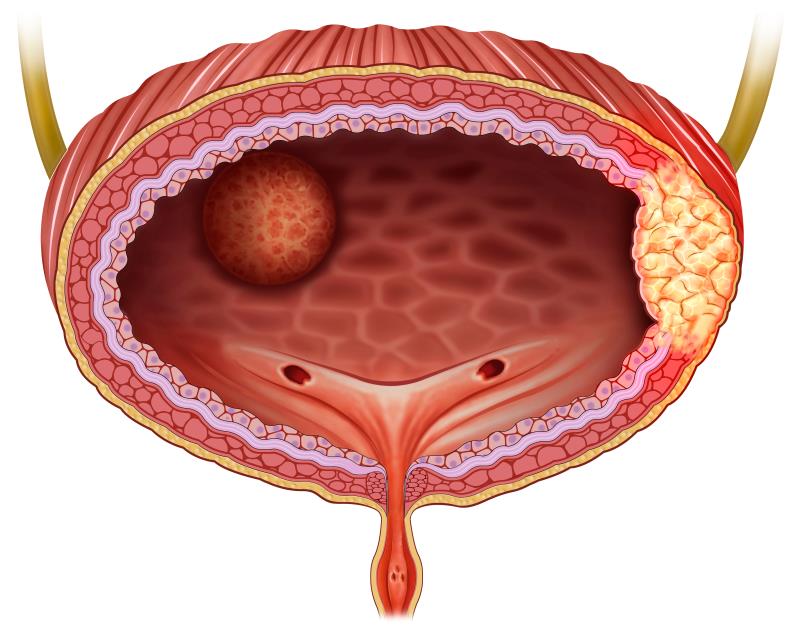
The addition of the potent triple angiokinase inhibitor nintedanib to a standard chemotherapeutic regimen consisting of gemcitabine and cisplatin generated survival benefit in patients with locally advanced muscle invasive bladder cancer (MIBC), according to the results of the NEO-BLADE* trial presented at ASCO GU 2020. However, the study failed to demonstrate improvement in the primary endpoint of pathologic complete response (CR).
Nintedanib is initially indicated for the treatment of lung conditions.** [BMJ Open Respir Res 2017;4:e000192; Ther Adv Med Oncol 2016;8:188-197; Mod Rheumatol 2019;doi:10.1080/14397595.2019.1696505] Nonetheless, the team sought to evaluate its potential in MIBC given the improved survival rates reported with neoadjuvant chemotherapy.
A total of 120 individuals (78.3 percent male, median age 68.5 years) with histologically proven MIBC were randomized 1:1 to receive nintedanib 200 mg twice daily or placebo for 12 weeks on top of gemcitabine 1,000 mg/m2 (days 1 and 8) and cisplatin 70 mg/m2 (day 1). Dose adjustments*** were done for patients with glomerular filtration rates (GFR) <60 mL/min following completion of the safety substudy and protocol amendment allowing patients with GFR between 40 and 60 mL/min. [ASCO GU 2020, abstract 438]
In the intention-to-treat analysis, no significant differences were seen between the nintedanib and the placebo arms in terms of pathologic CR (37 percent vs 32 percent) and overall# CR rates (38 percent vs 39 percent; odds ratio, 0.90; p=0.893).
However, progression-free survival (PFS) rates were significantly better with nintedanib vs placebo, both at 12 months (89 percent vs 74 percent) and 24 months (82 percent vs 61 percent; hazard ratio [HR], 0.468; p=0.013).
Nintedanib also yielded an overall survival (OS) benefit over placebo at both timepoints (96 percent vs 83 percent [12 months] and 89 percent vs 69 percent [24 months]; HR, 0.379; p=0.018).
“[Although] the study failed to reach its primary endpoint … the trial met the key secondary endpoints [as reflected by the] PFS and OS improvements at 1 and 2 years,” said study author Dr Syed Hussain from the University of Sheffield in Sheffield, England.
Toxicity profile
The most common adverse events associated with nintedanib use were neutropenia (n=6 vs 1 [placebo]) and hypertension (n=11 vs 0). “[Nonetheless, the] neutropenic effects … did not translate to increased admissions, hospitalizations, or increased episodes of febrile neutropenia,” said Hussain. The hypertension could have been a class effect that led to dose delays and reductions as per protocol. However, it did not lead to treatment cessation, he added.
“These safety data confirm that triplets may be delivered safely,” said Hussain. The substudy also showed that the reduced nintedanib and split cisplatin dose may be safely delivered with the standard gemcitabine dose, he added.
The researchers called for further exploration to validate the efficacy signals. Translational studies are also underway to evaluate biomarkers of response. “Nintedanib with [fibroblast growth factor] inhibition and anti-angiogenic effects may have an impact on the microenvironment [which could translate] to improved PFS and OS … We will [try] to look for … predictive markers to assess whether we can enrich future studies to gain better insight into the use of these combinations,” said Hussain.